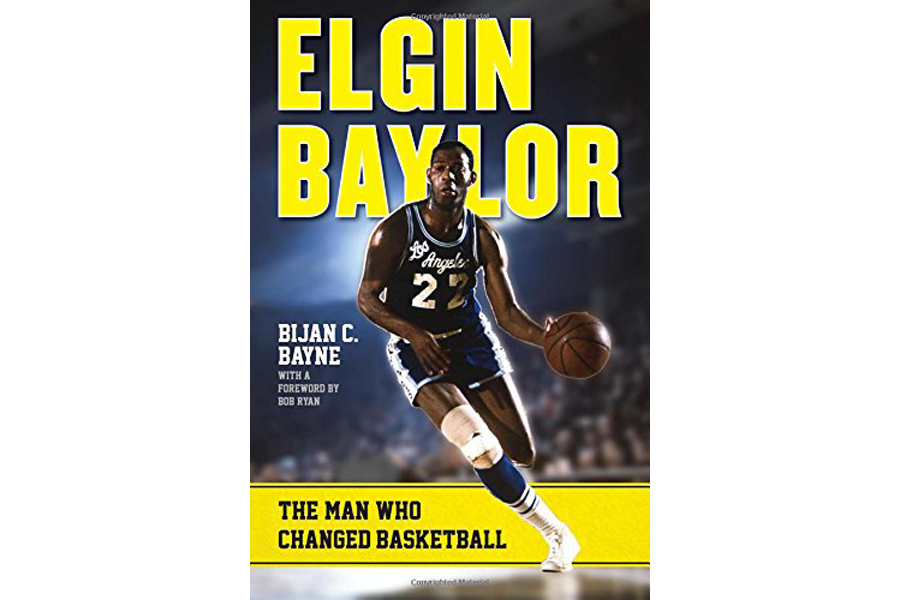As amazing as it seems, this is the first biography of Baylor, whose sensational 13-year NBA career, spent entirely with the Minneapolis and Los Angeles Lakers, is often overlooked today. Yet he is considered one of the NBA’s all-time greats, an innovative player whose aerial acrobatics and hanging, twisting shots set a high standard for such stars as Julius Erving and Michael Jordan who followed him. Baylor led Seattle University to the 1958 NCAA championship game, averaged 38.3 points a game during the 1961-62 season, and refused to tolerate racial discrimination. He once was even the league’s Executive of the Year with the Los Angeles Clippers, in 2006, during one of the few bright spots in franchise history.
Here’s an excerpt from Elgin Baylor:
“By the time Baylor became a less acrobatic player, basketball had become more established as a TV commodity. Baylor had played three seasons during his prime when the NBA had no national TV contract; once pro ball hit TVs throughout the country, the sporting media had shifted its reverence for the one-on-one game to such frequent flyers as the Hawks’ “Pogo” Joe Caldwell, Baltimore’s Gus Johnson, and the Virginia Squires’ Julius Erving. By 1967-1968, players like Baltimore Bullets rookie Earl Monroe were bringing the full force of the playground aerodynamics to mass audiences. Baylor’s professional numbers exceeded Monroe’s, Erving’s, and Caldwell’s best production. He played in seven NBA Finals and led his college team to a NCAA championship game. Baylor dropped 61 points in a NBA Finals game against the greatest dynasty in basketball history [the Boston Celtics], facing the best defensive player of all time [Bill Russell].
“While Baylor was never able to acquire a mass following, players throughout the decades have credited him with inspiring and teaching them.”







